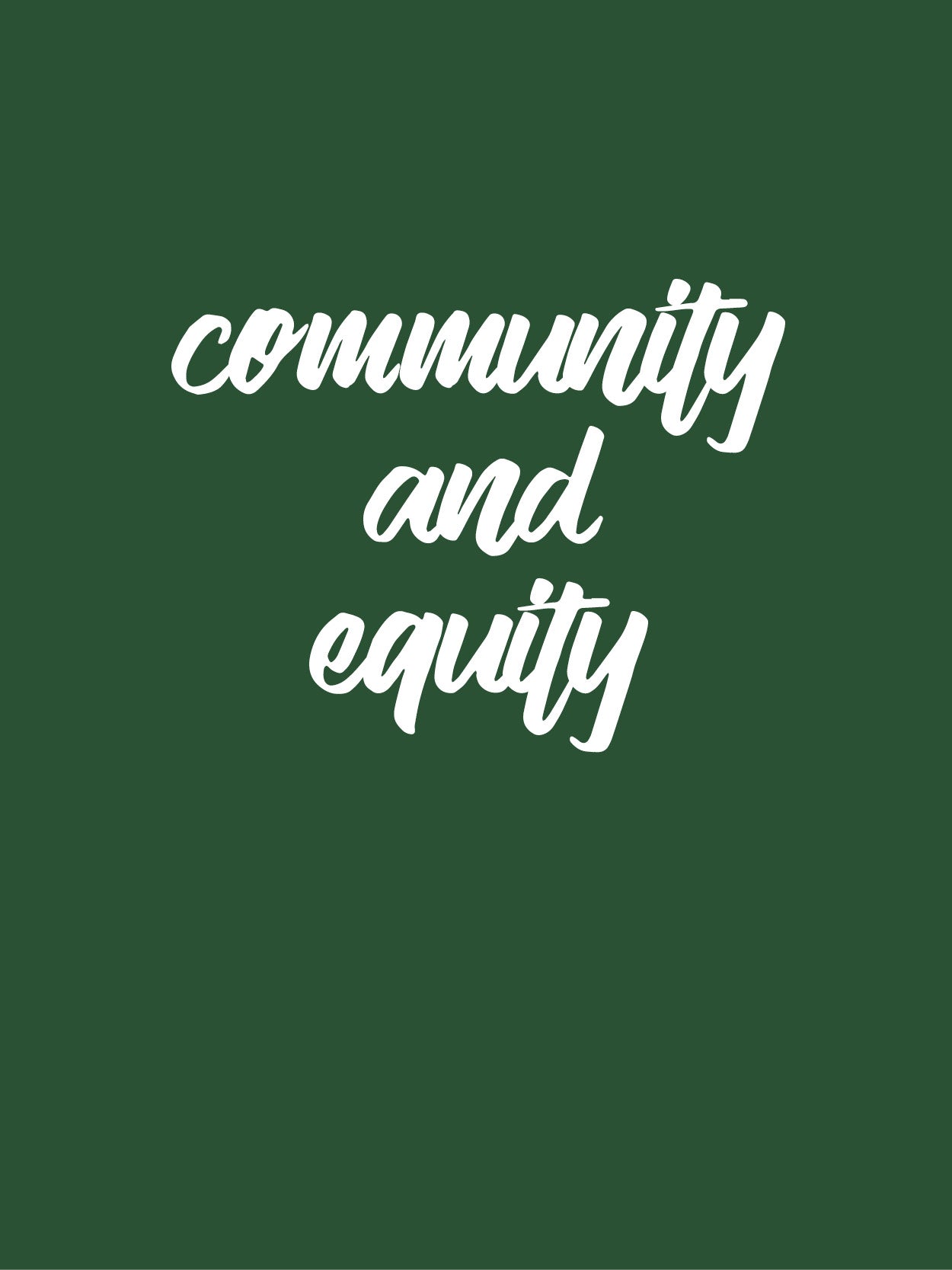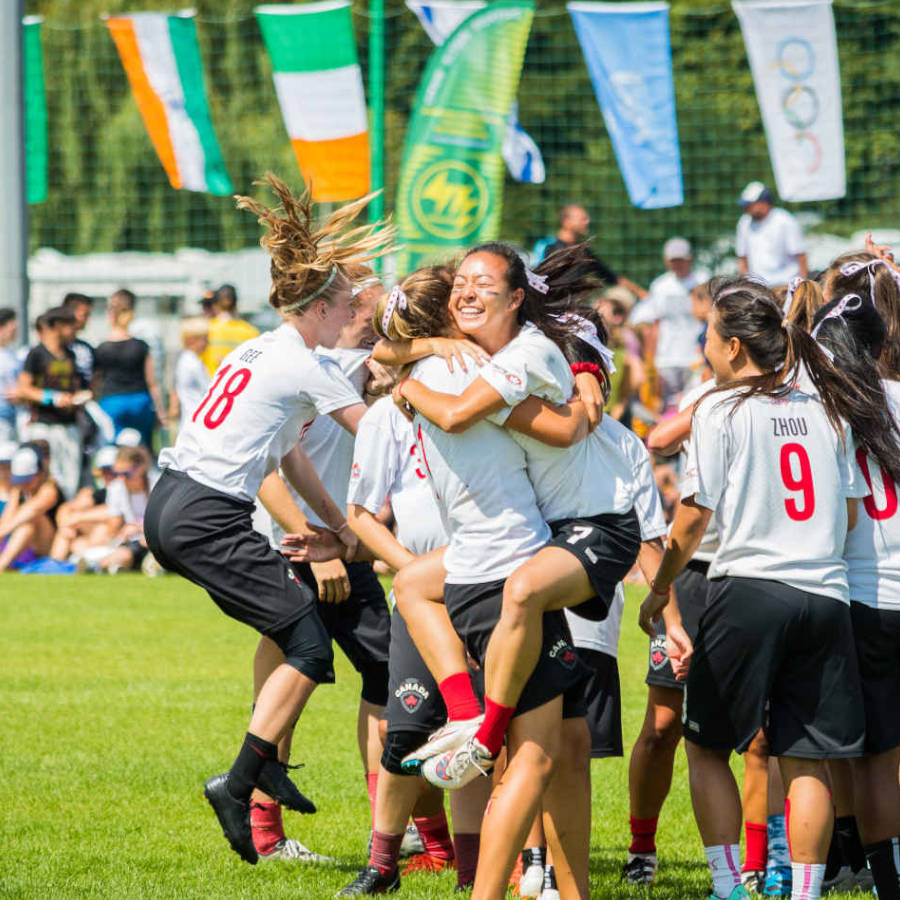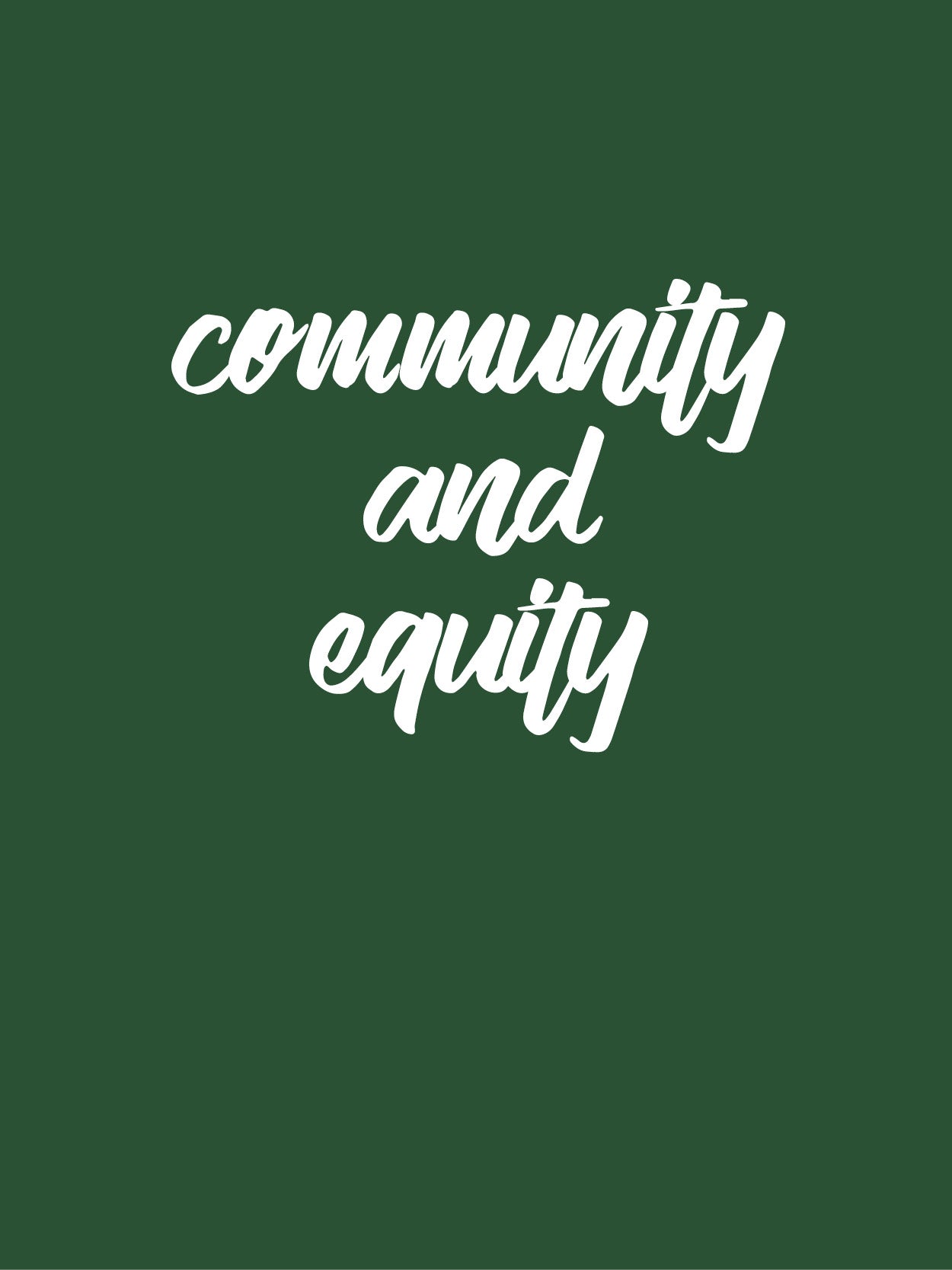
Gender Equity Discussion: Hosted by VC & The Ultimate Experience
Learn more about our discussion with the Toronto Ultimate community here!
On April 18th, VC hosted and sponsored an event with our friends from The Ultimate Experience. Here is the outline and resource package from the evening. Special thanks to Creeds Coffee for having us and being a great venue for events in Toronto!
WHY ARE WE HERE? TOSHARE, LISTEN, LEARN, SUPPORT
Why are you here? What are you hoping to achieve by being here?
How can we make this a “safe space”?
- Acknowledge the wide variety of personal experiences; don’t assume other’s experiences
- Reflect on your positionality/privileges/oppressions/intersections
- Park your ego
- Embrace discomfort
- Speak from personal experience (“I” statements)
- Trust intent, handle the impact
- Address the idea, not the person
- Accept non-closure
“Both And” Statements
- Avoid statements like, “I hear you but…”
- Acknowledge that potentially conflicting statements can both be true… “I understand your position AND I also think women should have equal opportunity at all levels” (can exist together, not either/or)
- Approach conversations committed to the idea that the way you feel doesn’t negate the way anyone else feels.
UNDERSTANDING GENDER EQUITY: DEFINITIONS & CONTEXT
Gender Equity
Gender equity acknowledges the historic and current conditions that have marginalized women and attempts to amend these past and current injustices and biases.
The process of allocating resources, programs, and decision making fairly to both males and females without any discrimination on the basis of gender…and addressing any imbalances in the benefits available to males and females. (more from www.caaws.ca below).
Gender Equality
Gender equality is achieved when women and men enjoy the same rights and opportunities across all sectors of society, including economic participation and decision-making, and when the different behaviours, aspirations and needs of women and men are equally valued and favoured.
Gender Discrimination
CEDAW (Convention on the Elimination of All Forms of Discrimination against Women) defines discrimination against as “any distinction, exclusion or restriction made on the basis of sex which has the effect or purpose of impairing or nullifying the recognition, enjoyment or exercise by women, irrespective of their marital status, on a basis of equality of men and women, of human rights and fundamental freedoms in the political, economic, social, cultural, civil or any other field.
Privilege
Unearned access to resources (social power) that are only readily available to some people because of their social group membership; an advantage, or immunity granted to or enjoyed by one societal group above and beyond the common advantage of all other groups.
Privilege is often invisible to those who have it.
Implicit Bias
Refers to the attitudes or stereotypes that affect our understanding, actions, and decisions in an unconscious manner (and that often don’t align with our stated values).
Intersectionality
The interconnected nature of social categorizations such as race, class, and gender as they apply to a given individual or group, regarded as creating overlapping and interdependent systems of discrimination or disadvantage.
We must, as a community, acknowledge, respect, and take in to account the perspective of individuals who do not identify as either male or female (non-binary).
Equality vs. Equity
Gender equality is the process of allocating resources, programs and decision making so that males and females have the same (therefore females and males would each receive 50% of the resources, facilities, and each have access to the same programs, e.g. if there was a male program, there would also be a female program).
While the goal of treating everyone the same may seem noble, the principle of equal treatment tends to ignore the fact that people differ in their capacities, interests, resources and experiences.
Equality focuses on creating the same starting line for everyone. Equity has the goal of providing everyone with the full range of opportunities and benefits – the same finish line.
Why is Equity important to you?
EXAMPLES OF GENDER EQUALITY VS GENDER EQUITY
We must, as a community, take in to account those who do not identify as either male or female (non-binary). This is a conversation about gender, which includes individuals who do not identify as male or female.
|
INEQUALITY |
EQUALITY |
EQUITY |
|
Classic 4-3 Male-Female gender ratio rules |
3-3 gender ratio in 6v6, or an alternating 4-3/3-4 system (WFDF Rule A) |
4-3 Female-Male gender ration rule*
|
|
Male player entitlement to picking up the disc. W18 TPL season to date: - Female: 1281, 24% - Male: 4096, 76% |
Requiring male and female players to take turns picking up the disc. |
“Pick it up” initiatives (only female players can pick up the disc). |
|
AUDL – only, or “mostly” male players and male-focused messaging. |
Australian Ultimate League (AUL). |
A professional women’s league that received more support from the community, associations, sponsors and stakeholders than a/the men’s league does/would. |
Breakout : Personal Experience of Gender Inequality
In groups of 3-4 new people, use the second page in booklet to list some points relating to the following questions.
- Have you ever experienced gender inequality, or gender bias, yourself? Were you the benefactor or the beneficiary?
- Do you see examples of gender inequality around you?
- Do you feel comfortable speaking up when you see examples around you? Why or why not?
WHO DOES GENDER INEQUALITY AFFECT?
Literally everyone is affected by gender inequality and can benefit from gender equity actions. The gender imbalance in our community has become more apparent and grown as the sport has new levels of competition that have created unequal opportunities for female players.
All Divisions:
- Youth
- League
- Women’s Division
- Mixed Division
- Open Division
Ultimate has the opportunity to be different – we are different. We are self-referred, we are community driven (how many people in the room are volunteers), we pride ourselves on being exclusive.
>> There’s still time to ensure that ultimate grows in a different way, where all players have equal playing opportunities and feel equally valued on the field.
WHO IS GENDER EQUITY GOOD FOR?
Everyone. (It is not a zero-sum game)
- Gender equality leads to higher level of happiness in communities.
- Businesses: How much is gender inequality costing already?
- Women: It’s about time. #TheFutureIsFemale
- Men: In every aspect of men’s lives, studies show that they are happier and healthier in every aspect of their lives.
In groups of 3-4 new people, use the third page in booklet to list some points relating to the following questions.
- What are the ways that you can personally be an ally and support/push forward gender equity in ultimate?
- What is one thing you’d like others to do to push gender equity forward?
WHAT CAN WE DO ABOUT IT?
Listen.
Really listen – to hear and understand – not to respond.
Share.
If we don’t understand each other’s perspectives, we won’t be able to make meaningful progress.
Keep talking – don’t let the conversation end here; keep respectfully engaging your teammates, organizers, affiliated companies and the community in general.
Act.
Speak up, change your language, be an ally.
More Resources on Gender Equality
Upwind Ultimate https://www.upwindultimate.com/
Step-up, Step-out Youtube Channel https://www.youtube.com/channel/UC0NCXh3hI-jFffbxjU5FxOg/videos
Having the Talk: Discussing Gender Equity with your Team
Video by the Zara Cadoux, co-founder of Girl’s Ultimate Movement
https://www.ultyresults.com/blog/having-the-talk-discussing-gender-equity-with-your-team
Gender Equity in Ultimate: A Guide for the Young Gentleman (Gender Equity Action Group)
http://skydmagazine.com/2016/09/gender-equity-ultimate-guide-young-gentleman/
Michael Kimmel, TEDWomen 2015
Why gender equality is good for everyone — men included
“I witnessed an interaction that changed my life forever. It was a conversation between two women. One of the women was white, and one was black. And the white woman said -- this is going to sound very anachronistic now -- the white woman said, "All women face the same oppression as women. All women are similarly situated in patriarchy, and therefore all women have a kind of intuitive solidarity or sisterhood." And the black woman said, "I'm not so sure. Let me ask you a question." So the black woman says to the white woman, "When you wake up in the morning and you look in the mirror, what do you see?" And the white woman said, "I see a woman." And the black woman said, "You see, that's the problem for me. Because when I wake up in the morning and I look in the mirror," she said, "I see a black woman. To me, race is visible. But to you, race is invisible. You don't see it." And then she said something really startling. She said, "That's how privilege works. Privilege is invisible to those who have it." It is a luxury, I will say to the white people sitting in this room, not to have to think about race every split second of our lives. Privilege is invisible to those who have it.”
“Making gender visible to men is the first step to engaging men to support gender equality.
"Now, when men first hear about gender equality, when they first start thinking about it, they often think, many men think, well, that's right, that's fair, that's just, that's the ethical imperative. But not all men. Some men think -- the lightning bolt goes off, and they go, "Oh my God, yes, gender equality," and they will immediately begin to mansplain to you your oppression. They see supporting gender equality something akin to the cavalry, like, "Thanks very much for bringing this to our attention, ladies, we'll take it from here."
“Look, we think this is a level playing field, so any policy that tilts it even a little bit, we think, "Oh my God, water's rushing uphill. It's reverse discrimination against us. So let me be very clear: white men in Europe and the United States are the beneficiaries of the single greatest affirmative action program in the history of the world. It is called "the history of the world."
Expanded CAAWS Gender Equity Resources
(Canadian Association for the Advancement of Women and Sport and Physical Activity)
What is Gender Equity?
CAAWS is a national organization dedicated to achieving gender equity in the Canadian sport and physical activity system, and more broadly throughout Canadian society.
Gender Equity is the process of allocating resources, programs and decision-making fairly to both males and females. This requires ensuring that everyone has access to a full range of opportunities to achieve the social, psychological and physical benefits that come from participating and leading in sport and physical activity. It does not necessarily mean making the same programs and facilities available to both males and females. Gender equity requires that girls and women be provided with a full range of activity and program choices that meet their needs, interests and experiences. Therefore, some activities may be the same as those offered to boys and men, some may be altered, and some may be altogether different. Human rights legislation, including the 1982 Canadian Charter of Rights and Freedoms, has affirmed the principles of equity while making provisions for affirmative action programs to eliminate disadvantages.
Positive initiatives that target specific groups are important because they take into account years of socialization and historical traditions that have created imbalances, subsequently marginalizing sectors of the population because these conditions are accepted as the norm.
More on Intersectionality
Kimberlé Crenshaw, TEDWomen 2016
The urgency of intersectionality
“[Intersectionality] deal[s] with the fact that many of our social justice problems like racism and sexism are often overlapping creating multiple levels of social injustice.”
“Double discrimination”
“Injustice squared”
“I would go on to learn that African-American women, like other women of color, like other socially marginalized people all over the world, were facing all kinds of dilemmas and challenges as a consequence of intersectionality, intersections of race and gender, of heterosexism, transphobia, xenophobia, ableism, all of these social dynamics come together and create challenges that are sometimes quite unique.”
“When you can't see a problem, you pretty much can't solve it.”
Kathryn Pauly Morgan
Intersecting Axes of Privilege, Oppression, and Domination Wheel
(1996) "Describing the Emporaro's New Clothes: Three Myths of Education (In)Equality." in The Gender Question in Education: Theory, Pedagogy & Poitics, Ann Diller et al., Boulder, CO: Westview

Chris Lehmann, Ultimate and Race
http://practicaltheory.org/blog/2018/01/12/ultimate-and-race/
Chip Chang, On Ultimate and “Equity and Diversity”
https://medium.com/@chipadelphia/on-ultimate-and-equity-and-diversity-69ea72505a05
Special Shout-outs for people helping collect these resources!
- Rena Kawabata for her insight, wisdom and feedback
- Zara Cadoux for sharing her amazing depth of knowledge
- Upwind Ultimate for leading workshops and inspiring sessions like these for all of us to learn from
- Tiina Booth for teaching so many of us involved in this movement to think critically and push ahead
- Lauren Kimura for helping find some of these awesome resources
A PDF of this post can be found here for download.


